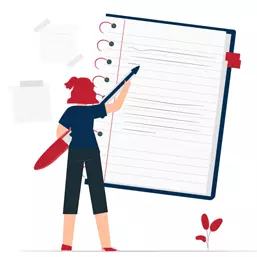
Methods of Handling Conflict
Start out with an ideal and end up with a deal.
– Karl Albrecht
Introduction
In any group, whether it consists of two people or several, there will inevitably be some level of contention. It is necessary to be knowledgeable of a variety of conflict resolution strategies and procedures since it is preferable to address and handle conflict than to avoid it. It is possible for the group to suffer additional harm if the disagreement is not managed well. On the other hand, if it is approached in a constructive manner, it can present a chance for expansion and progress.
Ensure that Maintaining Healthy Relationships is Your Number One Priority
When a disagreement happens, one of the first things that workers will do is try to figure out who is in the right and who is in the wrong in the circumstance. However, a competent leader of a team should keep in mind that seeking blame or justification is less vital than putting an emphasis on maintaining positive working relationships.

Employees might not realize this at first, but the leader of the team should serve as something of a mediator and concentrate on finding a solution that the team can agree on. Always ensure that both parties have the opportunity to speak and vent their concerns. Every worker ought to have the impression that their thoughts and feelings are being taken into consideration and that they are being heard. When members of the team communicate with one another, it is important to ensure that they do so in a manner that is both calm and respectful, and it is also important to urge them to remain constructive despite the stress. In the end, employees may (or may not) find the solution they were looking for, but regardless of whether or not they do, it is important that they leave the scenario maintaining healthy working relationships with one another. They do not need to always agree, and it is possible that they will not like the answers that each other provides, but they should continue to be respectful and kind to their teammates.
Maintain a healthy distance between individuals and issues.
In many instances of contention, a member of the team might characterize another individual as “simply being difficult” or “being unreasonable,” but this does not point out the fundamental issue. Simply because Bob is acting belligerently does not automatically make his behavior the source of the issue. When trying to resolve a problem, the primary objective is to find a solution that can please all parties involved while at the same time preserving positive relationships in the workplace.
Examining what exactly is going wrong requires the mediator, who is typically the person in charge of the team, to disentangle the issue at hand from the individual involved. Is the worker behaving in a peculiar manner? What may have prompted them to behave in such a manner? What part of what they’re saying to me is incorrect? Questions of this nature can assist the mediator in disentangling the nature of the actual conflict or problem from the person who is either presenting it to them or accusing them of it. Employees have a greater chance of resolving a quarrel while still maintaining a professional relationship if they direct their attention toward finding a solution to the issue rather than continuing to argue with one another while doing so.
Brief check
Finally, successful collaboration is dependent on the concept of collaboration itself - creating an environment that encourages communication, learning, maximum contribution, and invention.

It is important to take note of the many interests that are being presented
When a disagreement emerges, the parties involved are quick to point the finger at one another and concentrate on the behaviors of the other party rather than on the factors that are contributing to the situation. At this juncture, individuals of the team are neglecting to listen to one another and are instead concentrating more on the feelings and opinions that are emerging as a result of the disagreement. Instead, you should work to get each side to concentrate on the nature of the issue at hand and the demands being made of them by the other side.
Take, for instance, the scenario in which Susan approaches you and expresses her displeasure with Diana for requesting the project a week in advance. Diana is angry that Susan yelled at her about it. Susan’s yelling disturbed Diana. If each party took the time to set aside their emotions and present their interests first, they would realize that Diana may have asked for the assignment early to see how it was coming, while Susan only became angry because she didn’t want Diana to think she wasn’t working on it at all. If each party took the time to set aside their emotions and present their interests first, they would realize this. The employees were able to better comprehend why the other was acting the way that they were acting and why the other had chosen the stance that they had chosen by taking the time to attentively listen to one other and by putting their feelings forward in a straightforward manner.
Listen First, Talk Second
Listening attentively should be considered the first and most important rule of any method for dispute resolution. It is crucial to remember that listening comes first, followed by speaking. When people are angry, they frequently express themselves in a manner that is cruel or hurting, even if they do not intend to do so.

When members of a team are embroiled in a dispute, they are ready to resort to insulting language or to search for the ideal term with which to defend themselves; nevertheless, they fail to listen to what the other side has to say.
Brief check
Effective meetings allow members to express their perspectives and knowledge, which is crucial to successful collaboration. To do so, the team must be able to listen carefully, rather than just letting a member speak and listen.
As the proverb says, “Close the mouth and open the ears” if you want to find a solution to whatever problem you’re having. If either side wants to find a solution, they must do this. There is a possibility that certain workers will want the assistance of a mediator in order to get to this point. One party should simply listen to the other while the other person speaks for a predetermined amount of time so that the first party can convey how they are feeling and what the issue is. Then switch places with them. The employees should now be in a better position to comprehend where the issue originated, and they should be able to work together to find a solution to the issue without being inhibited by their feelings.
Practical Application
Lisa is currently in the process of conducting a disciplinary meeting for two of the members of her team, Grace, and Sally. Sally was upset because she felt that Grace was constantly attempting to direct her actions and didn’t appreciate it when Grace took on the role of a manager. Grace is frustrated with Sally because she feels as though she must always remind Sally to contribute her fair share of the job, and Grace believes that Sally never does so.
Lisa had a conversation with both of them and brought up the point that the objective here was to find a solution to the problem while maintaining their business relationship. Lisa provided each individual a few minutes of undisturbed time to speak in order for them to express what they thought was wrong with the situation. When both sides took the time to listen to what the other was attempting to say, they gained a deeper understanding of the fact that, despite appearances to the contrary, they were in fact attempting to assist one another.
Grace and Sally were able to continue working together after the meeting because they knew where the other person was coming from. This did not necessarily mean that they were any less angry at each other when they left the meeting.





